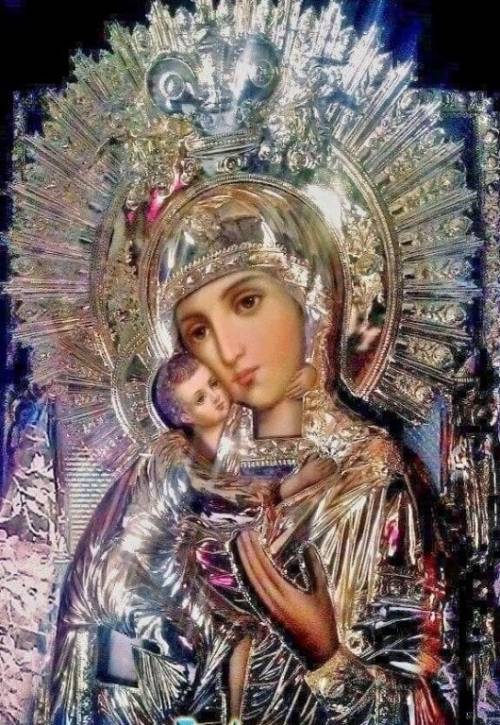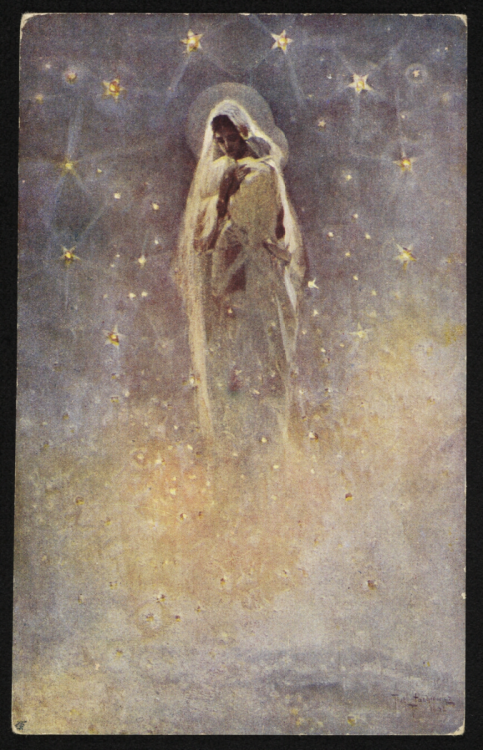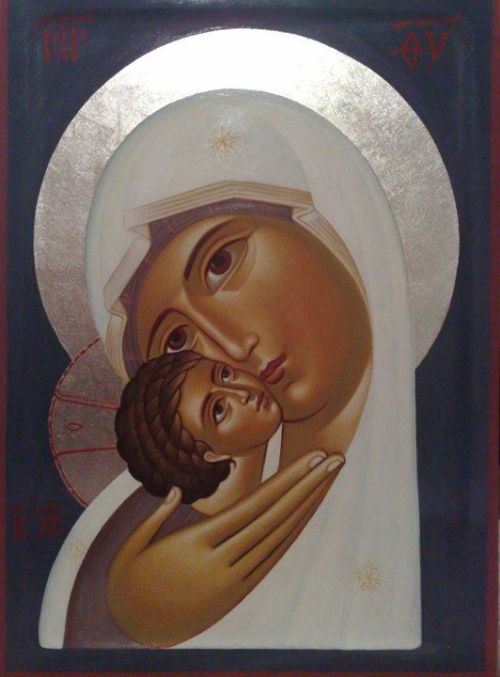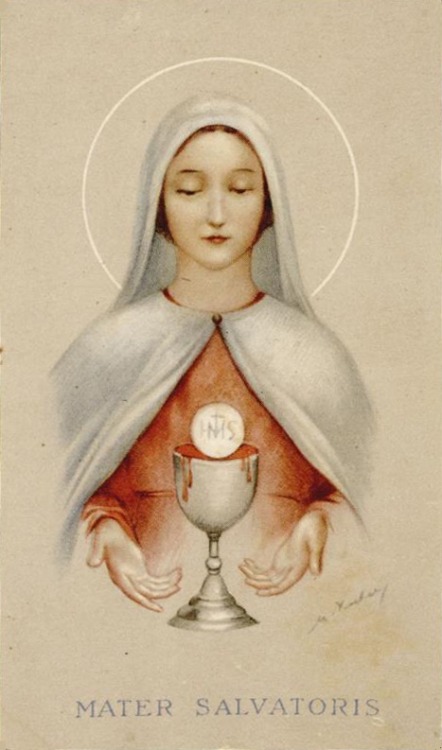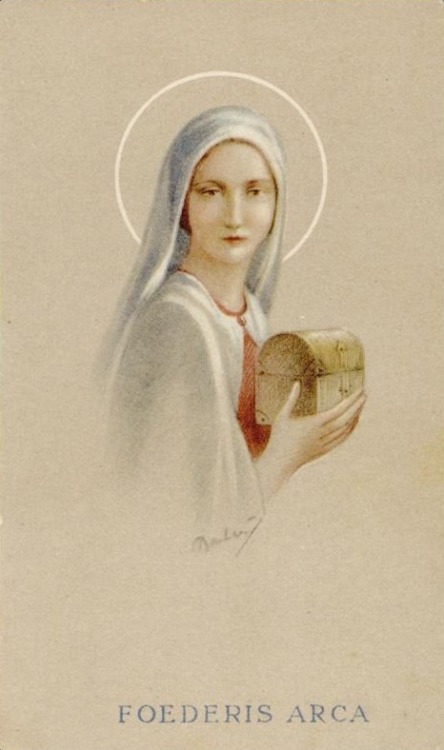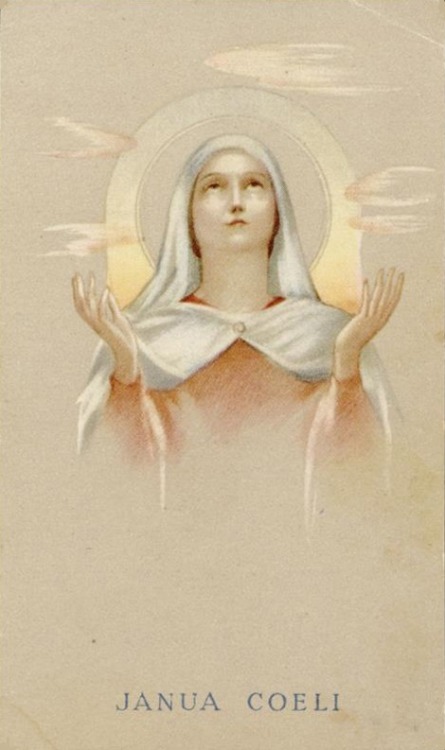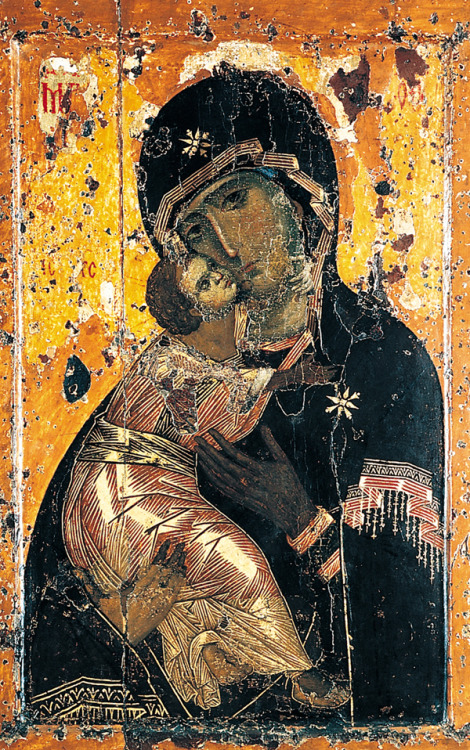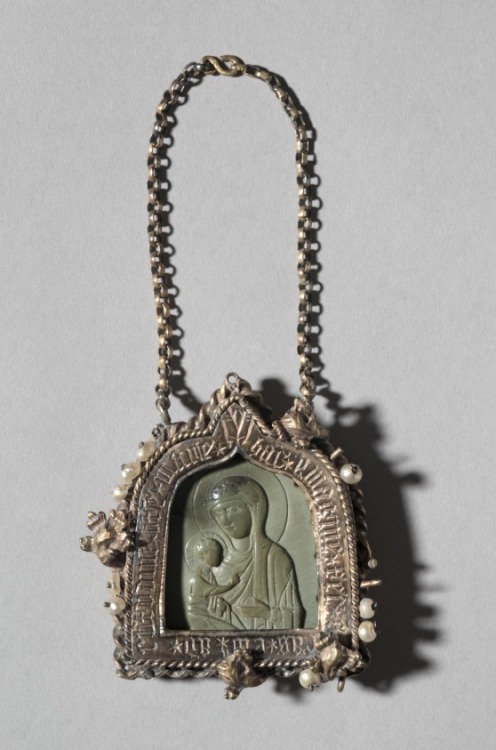#theotokos
Virgin Mary on The Milky Way. Vintage Polish postcard with artwork by Piotr Stachiewicz, 1920.
Post link
“The Holy of Holies was a forbidden place because it was awaiting the Entry of the Virgin Mary, who became God’s real Temple and gave it greater honor. The Virgin was not honored by that inaccessible place, but the place was honored by the entrance of the Virgin who was to become Christ’s mother.”
—St. Nicholas Cabasilas
Post link

@put_pravoslavlja Instagram
“Jesus took His flesh from the flesh of Mary.” - #SaintAugustineofHippo
La Adoración Eucarística / ritalaura / #Cathopic #CatholicPriestMedia #Catholic_Priest #Advent2020
“We can say that Mary not only carried the Son of God in her body when he was in her womb, but that she likely carried his cells in her body throughout her life in a way that further magnifies her position as the glorious Theotokos.”
~Some Human Beings Carry Remnants of Other Humans in Their Bodies
Post link
Mary under her various titles:
- Mother of Our Savior, pray for us!
- Virgin Most Faithful, pray for us!
- Mirror of Justice, pray for us!
- Seat of Wisdom, pray for us!
- Ark of the Covenant, pray for us!
- Gate of Heaven, pray for us!
- Morning Star, pray for us!
- Help of Christians, pray for us!
- Queen of Patriarchs, pray for us!
- Queen of Peace, pray for us!
Post link
HOMILY for the Solemnity of Mary, Mother of God
Numbers 6:22-27; Ps 66; Galatians 4:4-7; Luke 2:16-21

A week ago, on Christmas eve, I sang from the Martyrology, proclaiming that on the twenty-fifth day of December we celebrated “the Nativity of our Lord Jesus Christ according to the flesh.” And even as I sang those words I reflected on the theological precision of this text: that Jesus Christ, our Lord and God, is born not in his divinity for he is eternal, but born “according to the flesh”. As the same text proclaimed: “Jesus Christ, eternal God and Son of the eternal Father, longing to hallow the world by his most gracious coming, being conceived by the Holy Spirit, and nine months after his conception was born in Bethlehem of Judah as man from the Virgin Mary.” This is what we celebrate at Christmas and throughout these days: the birth of the eternal Son of God in time, born as one of us, “born of a woman, born a subject of the Law”, as St Paul says in his letter to the Galatians.
Being born “according to the flesh”, therefore, so we can say that in the person of Jesus Christ, God shares our human condition in every way but sin. So, being born “according to the flesh”, these words written by Shakespeare about our common human condition can be said of Jesus Christ who was born of a woman, born among the sons of Israel: “Hath not a Jew hands, organs, dimensions, senses, affections, passions? Fed with the same food, hurt with the same weapons, subject to the same diseases, healed by the same means, warmed and cooled by the same winter and summer… If you prick us, do we not bleed? If you tickle us, do we not laugh? If you poison us, do we not die?” So it is that during Christmastide we marvel at the implications of the Incarnation: that in the person of Jesus Christ God shares our human joys and sorrows; he laughs and cries as we do.
The temptation, though, is to think that all this only applies to the flesh, to the human bodily aspect of Jesus, so to speak, and so it does not apply to his divinity. We speak of Jesus Christ as being “true God and true Man”, but the problem is that the word “and” is used as a conjunction, and so we’re misled into thinking of Christ’s humanity and Christ’s divinity as being merely conjoined and not inextricably and substantially united. So, in the 5th-century Nestorius, the Archbishop of Constantinople, argued that the Bible “speaks of the birth and suffering not of the godhead but of the humanity of Christ, so that the holy virgin is more accurately termed mother of Christ than mother of God.”
But this cannot be because Christ is one unified person, not a split-personality; the human and divine natures are not conjoined in him but are rather, hypostatically or substantially or fundamentally always united in the one person, and not just accidentally as one would take clothing on and off. Christ cannot divest himself of his humanity, but rather, the marvel and scandal and wonder of the Incarnation is that the eternal Word of God has truly and substantially become flesh, born of a woman, born for us men and for our salvation.
Thus St Cyril of Alexandria wrote to Nestorius and said: “we adore one Son and Lord, Jesus Christ. We do notdivide him into parts and separate man and God in him… For, as we have already said, the Word of God was united hypostatically with the flesh and is God of all and Lord of the universe… For the one and only Christ is not dual, even though he be considered to be from two distinct realities, brought together into an unbreakable union. In the same sort of way a human being, though he be composed of soul and body, is considered to be not dual, but rather one out of two. Therefore, in thinking rightly, we refer both the human and divine expressions to the same person… Therefore, because the holy virgin bore in the flesh God who was united hypostatically with the flesh, for that reason we call hermother of God… because, as we have said, [the eternal Word of God] united to himself hypostatically the human and underwent a birth according to the flesh from her womb.”
The theological precision of the Christmas proclamation we heard a week ago, therefore, safeguards the uniqueness of Christ’s person: that Jesus Christ is always both God and Man, divine and human. Likewise today’s Solemn feast day, which has its origin in the Council of Ephesus on 431 when the Church adopted as her own the explanations of St Cyril of Alexandria concerning the unity of Christ’s person as both God and Man, and so declared Mary to be not only Mother of Christ but rather Theotokos, the God-bearer, the Mother of God. Today’s feast, falling on the Octave Day of Christmas, is therefore not a pious Marian insert into the Christmas festivities, but a fitting reminder that everything Mary does and is points to her divine Son; she always magnifies and exalts God her Saviour.
It is in this light that we read today’s Gospel, appropriately on the eighth day after the birth of Jesus, that is to say, on the day of his circumcision according to the flesh, under the prescripts of the Law. The baby born of Mary is named ‘Jesus’, which means “God is salvation”. Now, if Jesus is not fully God in the way that St Cyril and the Councils of the Church understand him to be, then he cannot save us. If Jesus is not hypostatically united as God and Man, then his blood, first shed for us at his circumcision, does not wash away our sins because it is merely the shedding of the blood of Jesus the man, and not Jesus the God-Man.
The doctrine of Christ’s hypostatic union that we celebrate today, therefore, that is expressed in the fact that we call Mary the Mother of God, is crucially important and is not just philosophical nit-picking. Rather, as with all good theology, good philosophical thinking and reasoning matters otherwise we get mired in heresy and confusion. So, St Cyril explains that God is born according to the flesh, born in time and born of a woman “in order that he might bless the beginning of our existence, in order that… the curse [of sin] against the whole race should thereafter cease which was consigning all our earthy bodies to death [and in order that, by Christ’s removal of the curse of sin and death, the words of the prophet might be fulfilled, that] ‘God has wiped every tear away from all face’.” Hence, on the first day of the year, together with Mary the Mother of God, we behold, in the person of Jesus Christ, the face of God; the God who is with us, who is so united to our humanity that he saves and elevates us to heaven, according to the flesh. Let us mull upon this awesome truth, and so let us be consoled and filled with joy this new year.
Finally, as we gather around the Altar now, let us reflect on the words of St Cyril concerning the Holy Eucharist that we receive. This is the living Bread come down from heaven, the hypostatically united God-Man who is born of a woman, born of Mary Mother of God, and who can thus give us true and everlasting life. St Cyril says: “we offer the unbloody worship in the churches and so proceed to the mystical thanksgivings and are sanctified having partaken of the holy fleshand precious blood of Christ, the saviour of us all. This we receive not as ordinary flesh, heaven forbid, nor as that of a man who has been made holy and joined to the Word by union of honour, or who had a divine indwelling, but as truly the life-giving and real flesh of the Word. For being Life by nature as God, when he became [a person] with his own flesh, he made it also to be life-giving” as he told us: “Truly, truly, I say to you, unless you eat the flesh of the Son of man and drink his blood, you have no life in you; he who eats my flesh and drinks my blood has eternal life, and I will raise him up at the last day.” (Jn 6:53f)
Virgin (Theotokos) and Child enthroned, apse mosaic, Hagia Sophia, Constantinople (Istanbul), Turkey, dedicated 867.
Post link
Virgin (Theotokos) and Child between Saints Theodore and George, icon, sixth or early seventh century. )Encaustic on wood, 2’ 3" x 1’ 7 3/8". Monastery of Saint Catherine, Mount Sinai, Egypt.
Post link
12th century Byzantine soapstone pendant icon in a 14th century German pearl-studded silver frame
Post link

